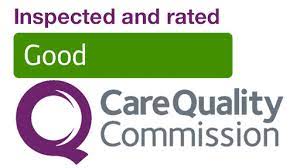Diagnostic Imaging is a pivotal part of health care in diagnosing the reasons for patients health complaints. There are different imaging techniques such as x-rays, ultrasound, MRI and CT scans.
Diagnostic Imaging is a pivotal part of health care in diagnosing the reasons for patients health complaints. There are different imaging techniques such as x-rays, ultrasound scans, MRI and CT scans. All these tests involve creating images of the internal organs of the body one way or another and these images are used for clinical analysis and medical intervention, as well as a visual representation of the function of some organs or tissues (physiology).
X-rays
X-rays are the oldest imaging technique and it is most commonly used to produce images of bones.
X-rays are usually carried out in NHS or Private hospital X-ray or Radiology departments by radiographers. Other healthcare professionals, such as dentists also use x-rays to image body parts specific to their profession.
How X-rays work
X-rays use ionising radiation to produce the image.
X-rays pass from one side of the body to the other and being absorbed different depending on the density of the body structures they meet. By the time they reach the detector some of the radiation energy has been absorbed by the body and that correlates to white parts on the image. The radiation that did not absorb by the body correlates to the white areas of the image.
When X-rays are used
X-rays can be used to examine most areas of the body. They're mainly used to look at the bones and joints, although they're sometimes used to detect problems affecting soft tissue, such as internal organs.
Problems that may be detected during an X-ray include:
- bone fractures and breaks
- tooth problems, such as loose teeth and dental abscesses
- scoliosis (abnormal curvature of the spine)
- non-cancerous and cancerous bone tumours
- lung problems, such as pneumonia and lung cancer
- dysphagia (swallowing problems)
- heart problems, such as heart failure
- breast cancer
X-rays can also be used to guide doctors or surgeons during certain procedures. For example, during a coronary angioplasty – a procedure to widen narrowed arteries near the heart – X-rays can be used to help guide a catheter (a long, thin, flexible tube) along with one of your arteries.
CT scan
A computerised tomography (CT) scan sometimes referred to as CAT scan, uses X-rays and a computer to create detailed images of the inside of the body.
They're carried out in the hospital by specially trained operators called radiographers and can be done while you're staying in the hospital or during a short visit.
When CT scans are used
CT scans can produce detailed images of many structures inside the body, including the internal organs, blood vessels and bones.
They can be used to:
- diagnose conditions – including damage to bones, injuries to internal organs, problems with blood flow, stroke, and cancer
- guide further tests or treatments – for example, CT scans can help determine the location, size and shape of a tumour before having radiotherapy, or allow a doctor to take a needle biopsy (where a small tissue sample is removed using a needle) or drain an abscess
- monitor conditions – including checking the size of tumours during and after cancer treatment
CT scans wouldn't normally be used to check for problems if you don't have any symptoms (known as screening).
This is because the benefits of screening may not outweigh the risks, particularly if it leads to unnecessary testing and anxiety.
MRI scan
Magnetic resonance imaging (MRI) is a type of scan that uses strong magnetic fields and radio waves to produce detailed images of the inside of the body.
An MRI scanner is a large tube that contains powerful magnets. You lie inside the tube during the scan.
An MRI scan can be used to examine almost any part of the body, including the:
- brain and spinal cord
- bones and joints
- breasts
- heart and blood vessels
- internal organs, such as the liver, womb or prostate gland
The results of an MRI scan can be used to help diagnose conditions, plan treatments and assess how effective previous treatment has been.
What happens during an MRI scan?
During an MRI scan, you lie on a bed that's moved into the scanner.
Depending on the part of your body being scanned, you'll be moved into the scanner either head first or feet first.
PET scan
A PET scan measures the activity of cells in different parts of the body. It can be used to find out if a tumour is cancerous or non-cancerous if it is growing and if it has spread to other parts of the body. We have more detailed information about having a PET scan.PET-CT scan
This is a combination of a CT scan, which takes a series of x-rays to build up a three-dimensional picture, and a positron emission tomography (PET) scan. A PET scan uses low-dose radiation to measure the activity of cells in different parts of the body.
PET-CT scans give more detailed information about the part of the body being scanned. You may have to travel to a specialist centre to have one. You can't eat for six hours before the scan, although you may be able to drink. A mildly radioactive substance is injected into a vein, usually in your arm. The radiation dose used is very small. The scan is done after at least an hour’s wait. It usually takes 30–90 minutes. You should be able to go home after the scan.
Ultrasound Scan
An ultrasound scan sends sound waves through your body. These waves bounce off your baby as echoes. The echoes are then turned into an image on a screen that shows your baby’s position and movements.
Hard tissues, such as bone, reflect the most sound waves and so make the biggest echoes. These appear white in the image, and soft tissues appear grey. Fluids, such as the amniotic fluid surrounding your baby, appear black. This is because the sound waves go through them with no echoes.
The person performing the scan (sonographer) will look at these different shades to interpret the images.
Ultrasound scans are most commonly associated with pregnancy although they are used to image other parts of the body like the breast, liver, kidneys, neck to name a few.
Ultrasounds are carried out in an NHS hospital and private ultrasound clinics.
You can read more about ultrasound scans here
Nuclear medicine scan
This is also known as a radionuclide scan. It involves having a chemical put into your body that can be picked up by a scanner, similar to having a contrast dye for a CT or MRI scan. But in this case, the chemical – known as a tracer or radionuclide – is radioactive. The tracer gives off a type of radioactivity called gamma rays.
Certain tumours and areas of your body absorb specific chemicals. These chemicals are made mildly radioactive and then put into your bloodstream. Because the tumours and/or the area of your body absorb the substance which is giving off gamma rays, they show up on the scan.
For example, if you have radioactive iodine injected into a vein, the tissues of your thyroid gland quickly absorb it. So, it is used to take images of your thyroid gland.
The dose of radioactivity you get is very low (about the same as you get from an x-ray). Almost all of it leaves your body within a few days.
What is it used for?
In certain cancers, it enables us to get a good idea of where the tumours are, their size and their structure. We may use this test to find where cancer started (a primary tumour), or to check for any spread of the disease (secondaries or metastases).
Types of the nuclear scan include:
In conclusion, there are multiple different radiology tests being used to diagnose disease. Some of these tests can be specific to the disease or can be used complementary to each other so the doctor can get a full picture of the stage of any disease and therefore plan the best available treatment for the patient. At Sonoworld we offer private ultrasound examination and health screening tests to help achieve a quick diagnosis of your symptoms.





